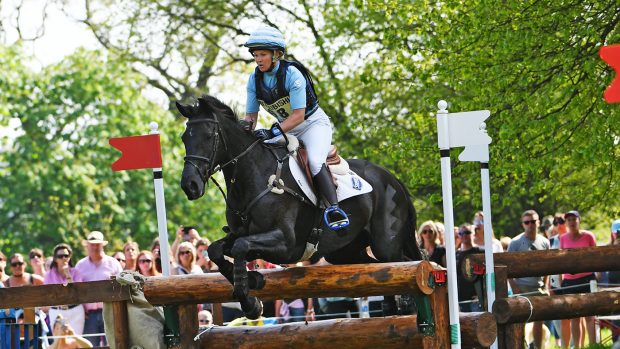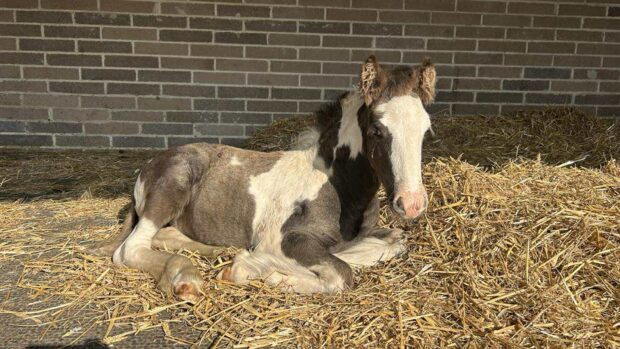IMPROVED education and teamwork are key to providing young horses with a start that will set them up for happy, healthy and sound lives long into the future.
This was the key message from the first “Better Beginnings” event, organised by the British Horse Foundation (BHF), on 10 October.
The aim of the conference, at which a variety of experts spoke, was to focus on management of youngsters, from before conception to two years old, seen “through the lens” of horse sport’s social licence to operate.
“These are challenging times, with increasing threats to equestrianism, and our social licence to continue to work with, care for and nurture horses,” said BHF chair Jane Nixon.
“We need to earn that licence, and show clearly, unequivocally to all who have never known or interacted with horses, that the horse always comes first, and its health and welfare is always paramount. If we make good breeding decisions, and get the first two vital years right, we have that foundation.
“What we take forward from today should be a springboard for better education, on management of young horses, and should have a positive effect on their happiness and quality of life into the future.”
Dr Nixon, an equine vet with decades of experience, said an aim of the day was to inform sustainable breeding and production, resulting in horses who are fit for purpose, with the least chance of developing physical or mental issues, and “earlier than necessary loss of function”.
“Socrates said the secret of change is to focus all your energy not on fighting the old but on building the new,” she said. “Today we won’t look back, unless it’s to plan for the future. We must produce a happy horse rather than chastise for an unhappy one.”
The focus was to be on motivating people to base their actions on the most up-to-date scientific evidence to help produce sustainable, rideable horses.
Four-time Olympian, and leading breeder and trainer, Jennie Loriston-Clarke spoke about the importance of sustainability in sport horses.
“Probably the most important part is that the horse can be trained for and sustain the level you consider it to be bred for,” she said. “Conformation and soundness are really the be-all and end-all of everything you do with the horse, plus temperament, of course.”
Mrs Loriston-Clarke spoke of the importance of varied work as horses start their training, on a variety of surfaces, up and down hills, with “a bit of jumping for any horse, as it loosens back muscles and gets them flexible”, and pole- and gridwork to build strength.
But before this point, she added, it is vital horses are bred carefully, “paying particular attention to straightness, conformation, then getting the food and the whole package right, so you can go on with a horse that’s good quality and will have a long life. Horses should not be retiring at 10”.
She added: “I could tell you of horses who have been ruined because they weren’t looked after properly as foals. You see an awful lot of ignorance, so it has to be education, in all we do.”
British Dressage international director and chief selector Judy Harvey said temperament and rideability are key for international horses, and that foals have to be raised as “good citizens”.
“They have to grow up as babies; socialising, playing in the field, learning pecking order and their place in society,” she said. “It’s very important they have a natural life.”
Ms Harvey noted the importance of handling foals so they can have the vital early farriery, and “give them the life they deserve”.
Edward Matson, of Twemlows Stud, spoke of the importance of the mare in breeding. Three key issues that need to be taken into account when deciding whether to breed from a mare are her conformation, temperament and any hereditary defects.
“Why are we breeding from that mare?” he asked. “People have high-performance mares they want to breed from, or there are the mares who have retired, so ‘let’s breed from her’, but why is that mare retiring, and should we be breeding from her?”
He stressed that people thinking of breeding one foal need to be aware of the resources needed to give that horse the best start.
“Have people got the time to do this?” he asked. “A theme of today is education, and how to get this across?”
Consultant anaesthetist Michelle Dawson stressed the importance of input from experts in foals’ development, and of listening to their feedback.
“You might have bred the best foal in the country, but how’s it doing at three, at six, and at nine?” she said, adding that this information may help inform future breeding decisions. “Maybe it got injured, and maybe all the foals from that mare break down before they’re 12. I think that ‘audit loop’ is missing in a lot of breeding.”
Two of the key players in foal development are nutrition and farriery.
Good farriery
Ben Benson, lead farrier at the 2012 and 2016 Olympics, said he is “passionate” about spreading the message on the vital importance of good farriery, from the start.
“I’ve heard a lot about what we’re trying to achieve with breeding and training, and conformation, but often we need to take that back to the start,” he said. “It’s about looking at the building blocks, and I’m not sure that message is clear enough to our breeders.”
Mr Benson said it is vital the foal is assessed by a vet and a farrier in the first 24 hours, including walked on a hard surface.
“They see hundreds of foals, and will see details often breeders and owners overlook because it’s their foal and it’s perfect,” he said, adding that any issues need to be addressed immediately, to minimise the risk of long-term issues. Foals’ feet should be trimmed within the first weeks, and at short intervals until the horse is 18 months old, to give the best chance of long-term straightness and soundness.
“We have a short window to work on a horse before it’s too late,” he said. “By the time it’s two, it is too late. The best management is trimming, every two to four weeks, to make sure the feet are as close to perfect as possible, so every foal has the best chance.”
Mr Benson agreed on the importance of all professionals working together to give a foal the best outcome, adding: “Who’s the most important in managing a young horse? Everyone. The whole team.”
Sidney Ricketts of Rossdales, who specialises in equine stud medicine and equine clinical pathology, cited the importance of ventilation for young horses, to avoid respiratory problems.
“Keep them out as much as possible,” he said, adding that when horses are housed, they should have fresh air coming in from both sides, at the horses’ level, and high ceilings, and that the air should “smell of fresh forage and clean horses, not manure and ammonia”.
Researcher and equine biomechanics expert Russell MacKechnie-Guire spoke of natural asymmetry in foals, which is likely to become more evident at about three months old. He said handling foals from both sides can be helpful, and early assessment of conformation is “essential”.
“Early intervention will help reduce the effect asymmetry may have on development,” he said.
Jan Birch, whose doctoral studies and specialist research interests are in reproduction, lactation and growth, covered weaning practices, saying the stress of weaning can be the greatest in a horse’s life.
Naturally, she said, weaning will take place at nine to 10 months, but early, abrupt weaning can cause stress. This can be behavioural, physiological and nutritional, which can have long-term effects.
She said although every mare and foal is different, in general gradual weaning, and in groups rather than individually, is the least stressful method.
“If you can reduce the stress of weaning, you have potential to be able to reduce negative impacts on foal growth and development,” she added.
You might also be interested in:

Jennie Loriston-Clarke: ‘Are we sacrificing horses’ soundness for the wow factor?’

Starting young horses: the secrets to success from some of the industry’s best

Subscribe to Horse & Hound magazine today – and enjoy unlimited website access all year round
Horse & Hound magazine, out every Thursday, is packed with all the latest news and reports, as well as interviews, specials, nostalgia, vet and training advice. Find how you can enjoy the magazine delivered to your door every week, plus options to upgrade your subscription to access our online service that brings you breaking news and reports as well as other benefits.




